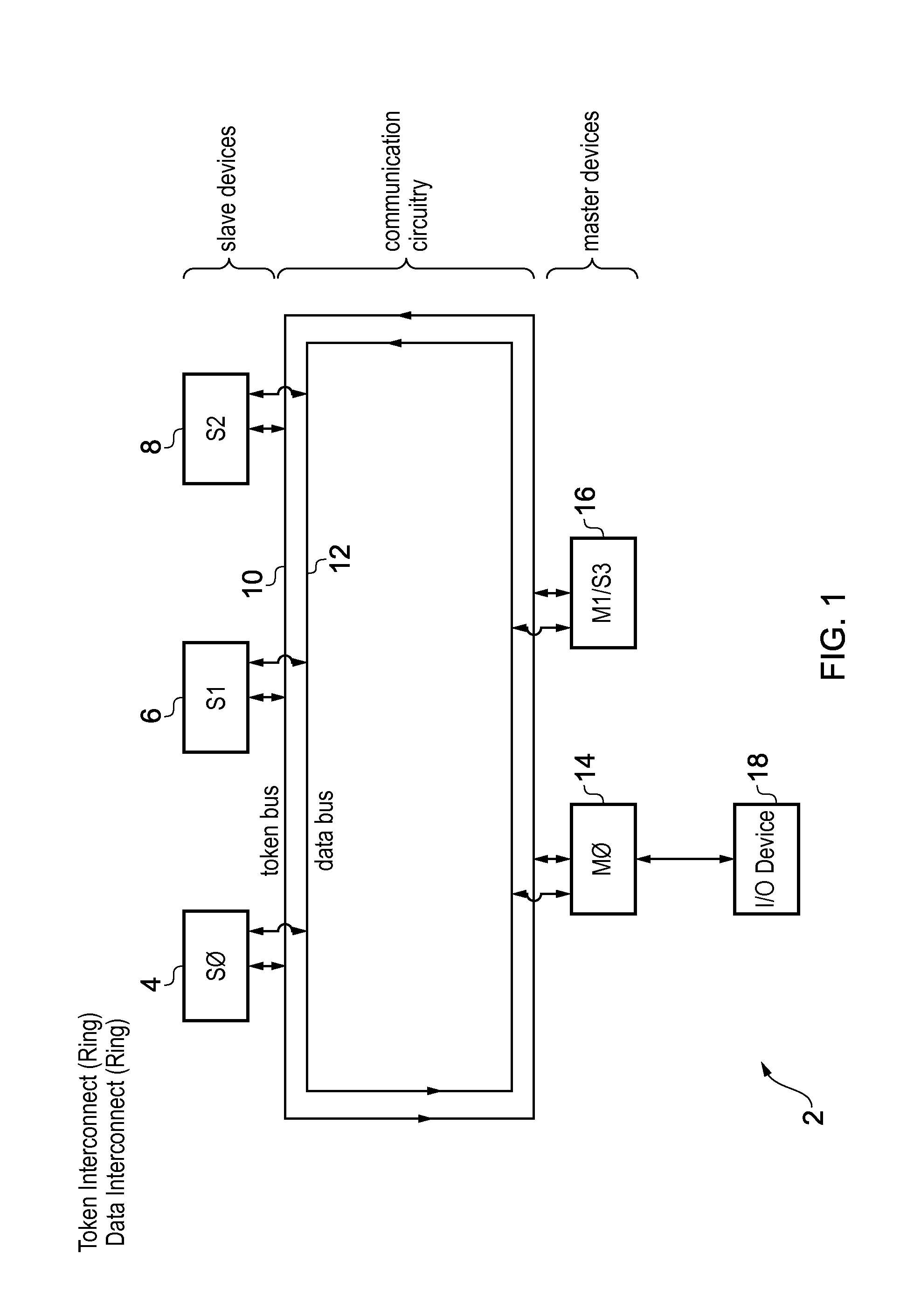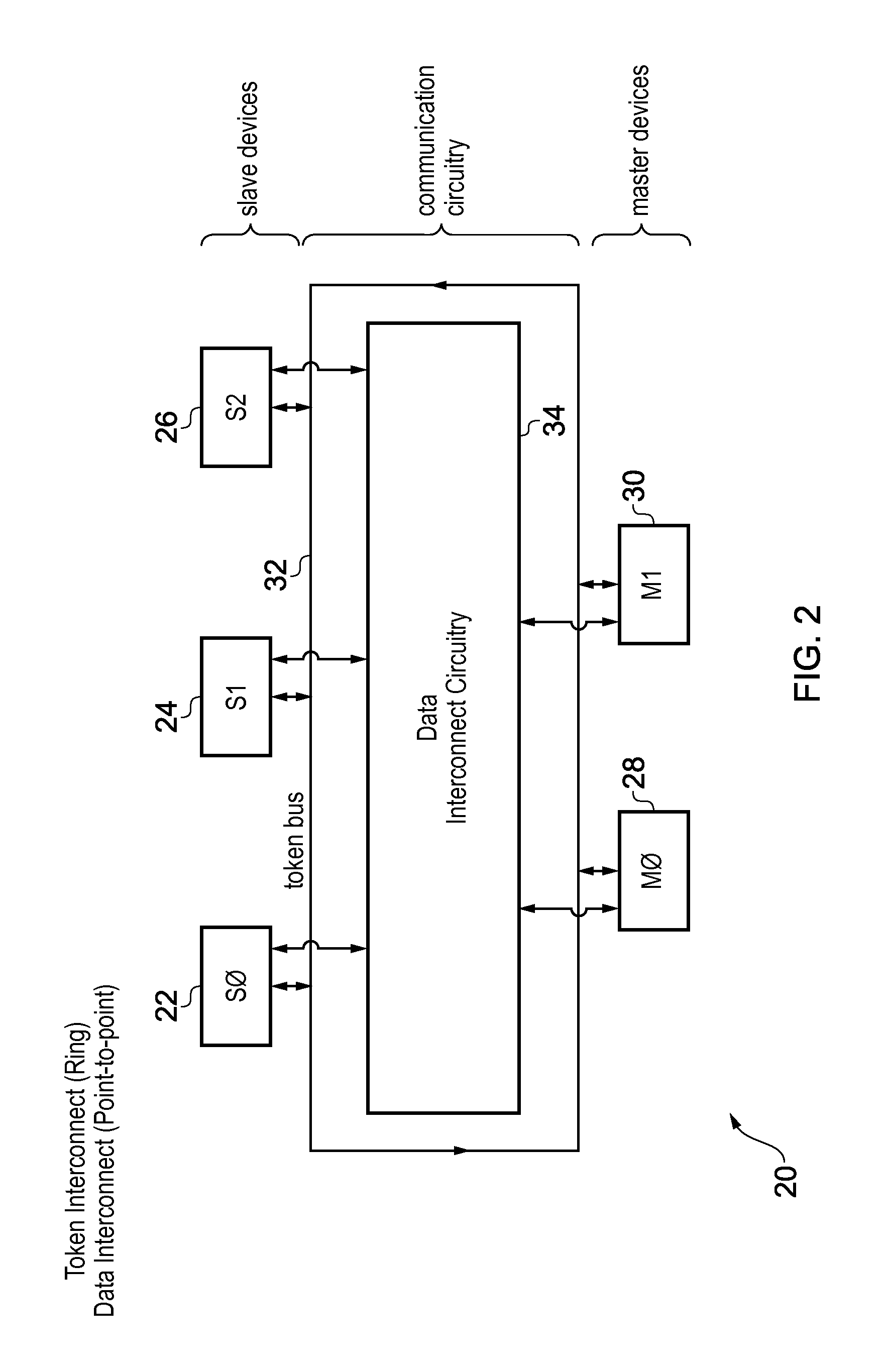Receiver based communication permission token allocation
a technology of communication permission and token allocation, applied in the field of data processing systems, can solve the problems of waste of circuit area overhead and power consumption, difficult to introduce a new slave device, or to change a slave device, etc., and achieve the effect of avoiding the slave powering down
- Summary
- Abstract
- Description
- Claims
- Application Information
AI Technical Summary
Benefits of technology
Problems solved by technology
Method used
Image
Examples
Embodiment Construction
[0056]FIG. 1 schematically illustrates a first example embodiment of data processing apparatus 2 including a plurality of slave devices 4, 6, 8 connected via a token ring bus 10 and a data ring bus 12 to a plurality of master devices 14, 16. In this example embodiment the master device 14 is a bridge to an input / output device 18. The input / output device 18 generates messages which are passed to the master device 14. The master device 14 is then responsible for initiating the transmission of those messages to the target slave device 4, 6, 8 when the master device 14 is in possession of a permission token indicating that the target slave device 4, 6, 8 has the capacity of accept the message if it is sent. The master device 16 in this example embodiment has a first mode of operation in which it functions as a master device and a second mode of operation in which it functions as a slave device.
[0057]FIG. 2 schematically illustrates a second example embodiment of a data processing appara...
PUM
 Login to View More
Login to View More Abstract
Description
Claims
Application Information
 Login to View More
Login to View More - R&D
- Intellectual Property
- Life Sciences
- Materials
- Tech Scout
- Unparalleled Data Quality
- Higher Quality Content
- 60% Fewer Hallucinations
Browse by: Latest US Patents, China's latest patents, Technical Efficacy Thesaurus, Application Domain, Technology Topic, Popular Technical Reports.
© 2025 PatSnap. All rights reserved.Legal|Privacy policy|Modern Slavery Act Transparency Statement|Sitemap|About US| Contact US: help@patsnap.com



